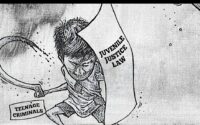PHOTO MORPHING: DECONSTRUCTION SECURITY OF AN INDIVIDUAL IN THE CYBERSPACE
The internet has given rise to a new industry for the online publication and consumption of obscene materials. The online sites represent the largest growth sector of digital economy. Gradually increase of electronic devices has given rise to so many offences like cyber bullying, cyber stalking and pornographic and etc. Photo morphing is the offence which is increasing in cyber space as compare to any other offences in cyber world.
Meaning of photo morphing:
Photo morphing in this unauthorised user with fake identity downloads the pictures of an individuals then uploads them after editing. In simple words morphing means to an image by using computer animation; to change in this way that whose pictures is morphed is hardly able to recognise it.
We people have a misconception that cyber crime are faced by women only it is wrong man also face cyber crime problems. We are not aware about the fact that our web cam or we share any obscene materials in any social media like (WhatsApp, Facebook, Instagram, snapchat and etc) it can be hacked and it has a possibility if you regulate that obscene material you have to bare the consequence.
As technology has given lots of advantages there exist disadvantages too. Technology has made our life easier but we people don’t know if some wrongful act happens with us in cyberspace. So, what steps we have to take. We people get scared to file a case regarding cyber crime because of the fear that we can lose our morality and dignity but, we people forget that our right to live with dignity has been infringed by the accused. In 2017, 4035 cyber crime cases were registered under the Information Technology Act 2000. The cyber crime mostly faced by women and children by morphing their pictures and using in porn pictures, movies and sites.
How to File Cyber Crime Complains?
Cyber crime cases usually seen with our kith and kin. Losing one’s hard earned money by online criminals or seeing our loved ones being suffered. The scenario that follows is utter confused and unable to understand. Where to file a cybercrime complaint? What are the steps to be taken to file the complaint? What evidence we have to provide? How long to wait for the justice?
Step1: File a written complaint within the cyber cell of the city in which you are currently living. According to the IT Act, 2000 cybercrime come under the purview of global jurisdiction means that cybercrime complaint can be filed within any of the cybercrime cell in India.
Step2: You are need to provide your all details to cyber cells(like phone number, address, email id and your name).
Step3: Online harassment like morphing, showing you obscene material without your permission in that case you can file a case and you can also go through legal counselling for the betterment of your case.
Step4: FIR can be filed in local police station which has a separate cyber cell office in it. If your application is rejected. You can proceed towards commissioner or the city’s Judicial Magistrate.
Step5: Offences under Indian Penal Code,1860 has to be registered under section 154 CRPC for every police officer to record the information/ complaint of an offense irrespective of the jurisdiction in which the crime was committed.
Step6: Complain can be through online medium too. You have to make sure that you report such activities in the initial stages. The Ministry of Home Affairs is in the process of launching a centralized online cybercrime registration portal where you can file cybercrime case.
Law Governing Photo Morphing:
Indian Penal code,1860
Section 292 speaks about sale, etc, of obscene materials (books, pamphlets, paper, writing, drawing, painting and etc) shall deemed to be obscene if it is lascivious or appeals to the prurient interest and tried to deprave and corrupt person personality. The circulation of obscene material can be through any means for the purchase earning profit and enhance their lifestyle and etc. In the first conviction the person who has committed such offences shall be liable for imprisonment which may extend to two years and fine extend up to two thousand rupees and in second subsequent conviction the person will liable for imprisonment which can extend to five years and fine extend up to five thousand rupees.
Information Technology Act,2000
Section 67 related to punishment for publishing and transmitting obscene material in electronic form: in the event of first conviction the person will be liable for imprisonment of three years and with fine which may extend to five lakh rupees and in the event of second subsequent conviction with imprisonment may extend to five year and fine can extend to ten lakh rupees.
Photo morphing is becoming a threat for an individual and our Indian legislation needs to stringent the laws for cyber crime in India.
By
Chikita Malhotra
Amity University, Raipur


